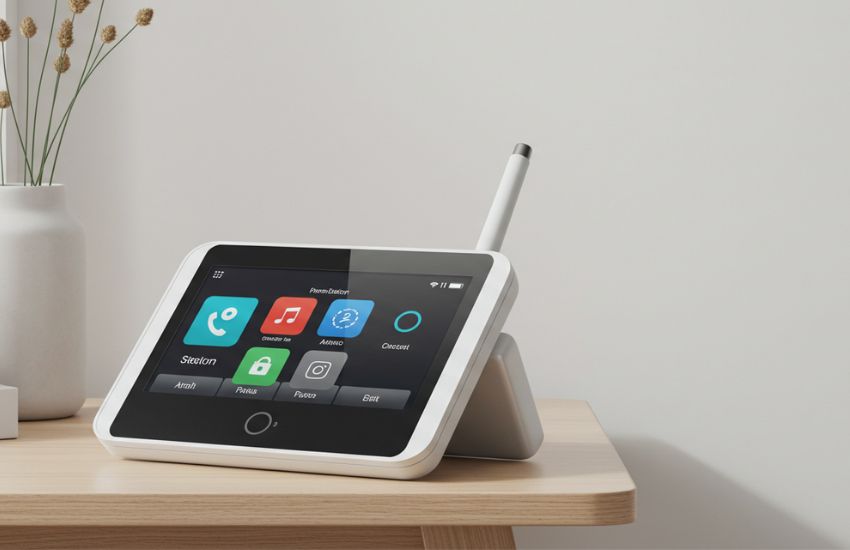Seeing a wireless caller on your phone display can feel a bit cryptic. You might wonder, What does wireless caller mean? In straightforward terms, it’s merely a label indicating the incoming call comes over a cellular network rather than a traditional landline. No secret code, no hidden drama, just a nod to how today’s mobile systems tag calls.
Defining Wireless Caller
A wireless caller is anyone placing a call from a mobile device, smartphone, basic feature phone, or tablet with voice service, using radio towers instead of copper wires. From a technical standpoint:
- The call travels through your carrier’s cellular infrastructure.
- Signal strength shifts with tower proximity and local terrain.
- Caller information relies on the cellular network’s digital protocol.
When your screen shows a wireless caller, it simply flags that digital pathway. It doesn’t mean the caller is unknown, malicious, or restricted, just that they dialed from a mobile line.
How Wireless Caller ID Works
The term wireless caller ID refers to the method by which cell networks attach identifying details, number, name, and sometimes business info, to an incoming call. Here’s a concise breakdown:
- Signal Embedding: Once you dial, the mobile network wraps your number into a data packet.
- Directory Check: If your number appears in a public or carrier-maintained directory, the network pulls the associated name.
- Display on Receiver: The recipient’s device reads the packet and shows either the registered name, the raw digits, or, if no match exists, the fallback wireless caller tag.
Contrast this with analog landline ID, which transmitted numbers via simple audio tones. Modern cellular systems use digital exchanges, offering richer information, provided both networks cooperate.
Comparing Wireless Caller vs. Landline
Understanding wireless caller vs. landline can clarify differences in reliability, billing, and emergency services:
- Mobility: Wireless callers wander in airports, coffee shops, and city streets. Landlines stay anchored.
- Stability: Landline connections remain constant unless physical wiring is damaged. Cellular signals vary with weather, obstructions, and network traffic.
- Caller Data: Landline caller ID often pulls from local exchanges; cellular networks draw on broader regional or national directories.
- An Emergency Response: A cell call can deliver a rough GPS location. Landline calls route to a fixed address on record.
Each has strengths: landlines excel in steady audio quality, while mobiles offer flexibility and location-based services.
Why You See Wireless Caller Instead of a Name
There are several reasons your phone might default to a wireless caller:
- The number isn’t listed in any public directory.
- The caller’s carrier didn’t transmit a name tag.
- Caller ID spoofing masks the true number, stripping away name data.
If you suspect spam or fraud, repeated, unexplained pings, odd voicemail behavior, or requests for sensitive data, exercise caution. Let the call go to voicemail and verify through a known channel.
How to Block Wireless Caller Numbers
Persistent calls from unknown mobile numbers can become a nuisance. To block wireless caller entries:
- On Your Device: Both Android and iOS allow you to select a recent call and choose Block this Caller.
- Carrier Tools: Most wireless providers supply free or subscription-based spam filters in your online account portal.
- Third Party Apps: Apps such as Truecaller, Hiya, or RoboKiller maintain live spam lists and can autoblock suspicious numbers.
- Do Not Disturb Settings: Configure your phone to silence all but your contacts or favorite numbers during specific hours.
Keep a simple log of blocked numbers. If the calls escalate, you’ll have documentation should you need to involve law enforcement.
Conclusion
A wireless caller label is nothing more than your phone’s way of indicating a mobile-originated call. Understanding what a wireless caller means clears up any confusion and helps you differentiate wireless caller vs. landline experiences.
With built-in features and third-party solutions at your disposal, you can easily block wireless caller numbers when unwelcome rings cross the line into intrusion. Now, the next time your screen flashes a wireless caller, you’ll recognize it for exactly what it is: a standard mobile call carrying its identity through digital networks.
